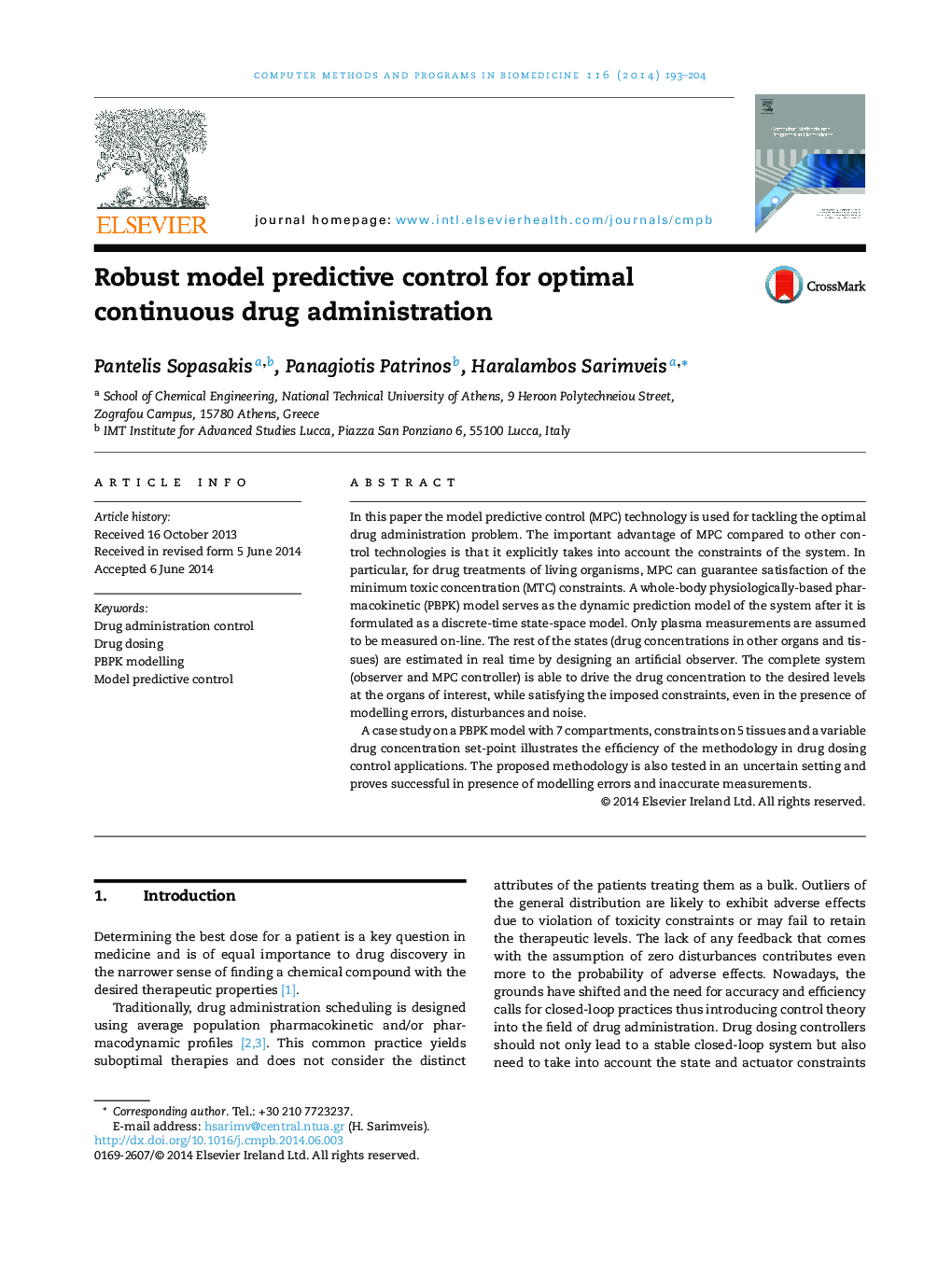| کد مقاله | کد نشریه | سال انتشار | مقاله انگلیسی | نسخه تمام متن |
|---|---|---|---|---|
| 466448 | 697843 | 2014 | 12 صفحه PDF | دانلود رایگان |
• The model predictive control methodology was used to design an optimal drug administration scheme for continuous drug administration.
• A PBPK model served as the predictive model, after it is formulated as a state-space system.
• The methodology can impose constraints on all different compartments, even if drug concentration measurements are not possible by augmenting the control system with an observer.
• Through the application to the problem of distributing DMA in mice, it was shown that the method is not sensitive to the presence of measurement noise and intra-patient variability.
In this paper the model predictive control (MPC) technology is used for tackling the optimal drug administration problem. The important advantage of MPC compared to other control technologies is that it explicitly takes into account the constraints of the system. In particular, for drug treatments of living organisms, MPC can guarantee satisfaction of the minimum toxic concentration (MTC) constraints. A whole-body physiologically-based pharmacokinetic (PBPK) model serves as the dynamic prediction model of the system after it is formulated as a discrete-time state-space model. Only plasma measurements are assumed to be measured on-line. The rest of the states (drug concentrations in other organs and tissues) are estimated in real time by designing an artificial observer. The complete system (observer and MPC controller) is able to drive the drug concentration to the desired levels at the organs of interest, while satisfying the imposed constraints, even in the presence of modelling errors, disturbances and noise.A case study on a PBPK model with 7 compartments, constraints on 5 tissues and a variable drug concentration set-point illustrates the efficiency of the methodology in drug dosing control applications. The proposed methodology is also tested in an uncertain setting and proves successful in presence of modelling errors and inaccurate measurements.
Journal: Computer Methods and Programs in Biomedicine - Volume 116, Issue 3, October 2014, Pages 193–204
